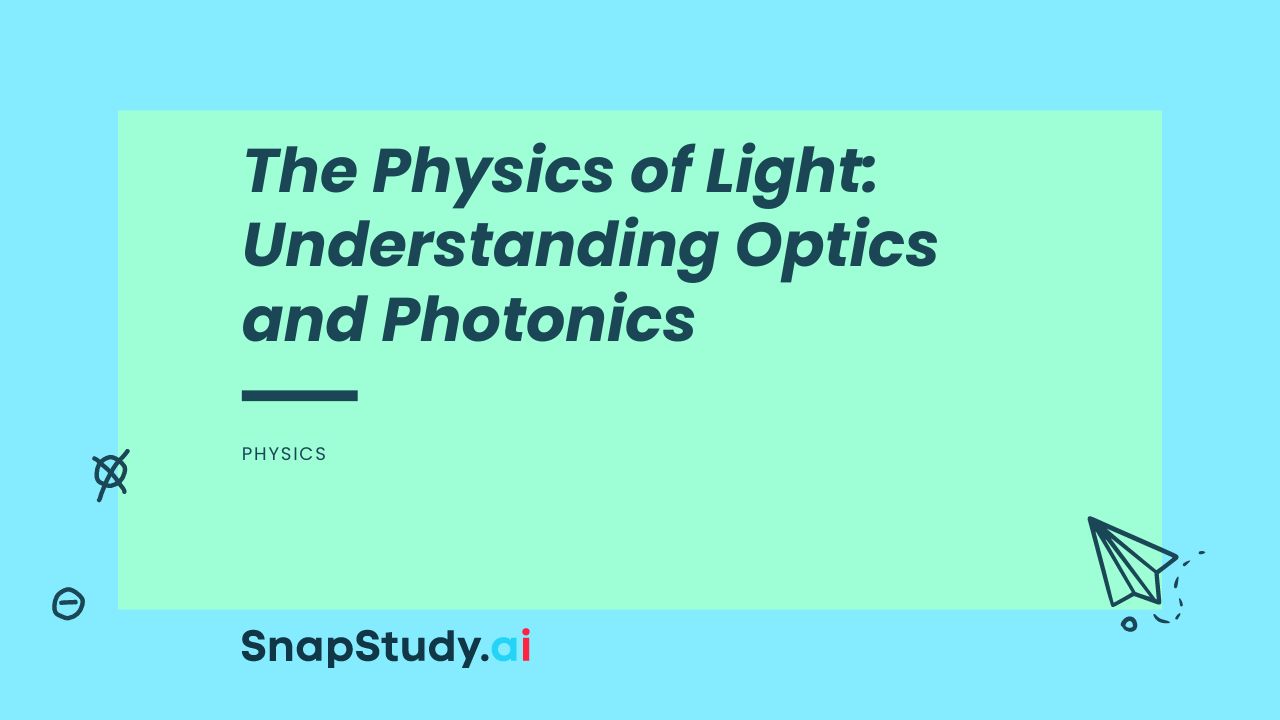Light, a fundamental aspect of our everyday lives, is a fascinating phenomenon that has intrigued scientists and researchers for centuries. From allowing us to comprehend the world around us to its critical role in steering advanced technologies like laser surgery and fiber optic communication, light’s significance is unparalleled. The following sections delve deeper into the nature and properties of light, its behavior, and its technological applications.
Chapter 1: The Nature of Light
Light is a form of electromagnetic radiation that is visible to the human eye. It comprises particles referred to as photons. What makes light intriguing is its ability to demonstrate dual behavior – as particles and waves. This characteristic, known as the “wave-particle duality,” is a fundamental facet of quantum mechanics.
Section 1.1: Wave-Particle Duality
At the dawn of the 20th century, scientists unearthed that light embodies properties of both waves and particles. This dual nature of light is evident in phenomena like the photoelectric effect and interference patterns. The photoelectric effect refers to the emission of electrons when light shines on a material, demonstrating its particle-like behavior. On the other hand, interference patterns, where light waves overlap causing bright and dark fringes, illustrate light’s wave nature.
Chapter 2: Optics: The Study of Light
Optics, a branch of physics, mainly focuses on the properties and behavior of light, including its interactions with matter and the construction of instruments that use or detect light. This field has been instrumental in developing our understanding of how light influences and interacts with the world around us.
Section 2.1: Reflection and Refraction
Two of the most fundamental concepts in optics are reflection and refraction. Reflection involves the bouncing back of light from a surface. For instance, when we look at ourselves in a mirror, we are seeing the reflection of light off our bodies. On the other hand, refraction is the bending or alteration of light’s path as it traverses from one medium to another of different densities, like from air into water. Both these phenomena are central to many optical devices and technologies, including lenses, cameras, and telescopes.
Chapter 3: Photonics: The Technology of Light
Photonics, the technology and application of light, encompasses the emission, transmission, modulation, signal processing, switching, amplification, and detection of light. This field is at the heart of many modern technologies and is a central component in fields ranging from telecommunications to medicine.
Section 3.1: Lasers and Fiber Optics
Two essential pillars of photonics are lasers and fiber optics. Lasers, devices that generate intense beams of light by stimulating the emission of radiation, have applications ranging from surgery to manufacturing. On the other hand, fiber optics, thin strands of glass or plastic that transmit information over long distances at high speeds, are the backbone of the modern internet and telecommunications industry.
Conclusion
The physics of light is a deep and captivating field, touching on complex areas of physics and leading to technologies that fundamentally transform our world. As we continue to unravel the mysteries of light, we pave the way for new discoveries and technologies. By understanding optics and photonics, we can appreciate the incredible complexity and beauty of light, enhancing our understanding of the world around us and beyond.





